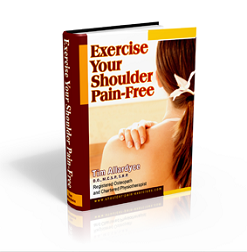Treatments for bursitis and tendinitis
General Treatment Approach for Both
🔹 1. Rest & Activity Modification
-
Avoid the movements or activities that triggered the condition.
-
Take breaks from repetitive motions (e.g., typing, lifting, running).
🔹 2. Ice/Cold Therapy
-
15–20 minutes a few times a day.
-
Reduces inflammation and numbs pain.
🔹 3. Anti-inflammatory Medications (NSAIDs)
-
Ibuprofen (Advil), Naproxen (Aleve), etc.
-
Helps reduce inflammation and relieve pain.
🔹 4. Physical Therapy
-
Stretching and strengthening exercises.
-
Improves flexibility and corrects movement mechanics.
-
Especially important in tendinitis to avoid recurrence.
🔹 5. Bracing or Support
-
Elbow straps, knee braces, heel lifts depending on location.
-
Helps offload the affected area.
💉 For More Persistent or Severe Cases
🔹 6. Corticosteroid Injections
-
Reduces severe inflammation.
-
More commonly used in bursitis.
-
Not always recommended in tendinitis, especially chronic, because it can weaken the tendon over time.
🔹 7. Aspiration (for Bursitis)
-
If the bursa is very swollen, fluid may be drained with a needle.
-
Helps relieve pressure and may be sent for infection testing.
🧬 Specific Considerations
✔️ Bursitis
-
Infectious (septic) bursitis needs antibiotics and sometimes surgical drainage.
-
Prevent pressure (e.g., knee pads if it’s prepatellar bursitis).
✔️ Tendinitis
-
If chronic, it may shift toward tendinosis (degenerative, not inflammatory).
-
In that case: eccentric strengthening and sometimes shockwave therapy, PRP (platelet-rich plasma), or dry needling may be considered.
-
-
Surgery is rare but might be needed if there's a tendon tear.
🌿 Home Remedies & Lifestyle Tips
-
Warm compress can help more with chronic conditions.
-
Omega-3s, turmeric, and ginger have mild anti-inflammatory effects.
-
Maintain good posture and body mechanics, especially if repetitive tasks are part of your daily routine.
How Are Bursitis and Tendinitis Treated? from National Institute of Arthritis and Musculoskeletal and Skin Diseases (NIAMS)
Treatment focuses on healing the injured bursa or tendon. The first step in treating both of these conditions is to reduce pain and inflammation with rest, compression, elevation, and anti-inflammatory medicines such as aspirin, naproxen (Naprosyn1Aleve), or ibuprofen (Advil, Motrin, or Nuprin).
Ice may also be used in acute injuries, but most cases of bursitis or tendinitis are considered chronic, and ice is not helpful. When ice is needed, an ice pack can be applied to the affected area for 15-20 minutes every 4-6 hours for 3-5 days. Longer use of ice and a stretching program may be recommended by a health care provider.
Activity involving the affected joint is also restricted to encourage healing and prevent further injury.
In some cases (e.g., in tennis elbow), elbow bands may be used to compress the forearm muscle to provide some pain relief, limiting the pull of the tendon on the bone. Other protective devices, such as foot orthoses for the ankle and foot or splints for the knee or hand, may temporarily reduce stress to the affected tendon or bursa and facilitate quicker healing times, while allowing general activity levels to continue as usual.
The doctor or therapist may use ultrasound (gentle sound-wave vibrations) to warm deep tissues and improve blood flow. Iontophoresis may also be used. This involves using an electrical current to push a corticosteroid medication through the skin directly over the inflamed bursa or tendon. Gentle stretching and strengthening exercises are added gradually. Massage of the soft tissue may be helpful. These may be preceded or followed by use of an ice pack. The type of exercises recommended may vary depending on the location of the affected bursa or tendon.
If there is no improvement, the doctor may inject a corticosteroid medicine into the area surrounding the inflamed bursa or tendon. While corticosteroid injections are a common treatment, they must be used with caution because they may lead to weakening or rupture of the tendon (especially weight-bearing tendons such as the Achilles [ankle], posterior tibial [arch of the foot], and patellar [knee] tendons). If there is still no improvement after 6-12 months, the doctor may perform either arthroscopic or open surgery to repair damage and relieve pressure on the tendons and bursae.
If the bursitis is caused by an infection, the doctor will prescribe antibiotics.
If a tendon is completely torn, surgery may be needed to repair the damage. After surgery on a quadriceps or patellar tendon, for example, the patient will wear a cast for 3-6 weeks and use crutches. For a partial tear, the doctor might apply a cast without performing surgery.
Rehabilitating a partial or complete tear of a tendon requires an exercise program to restore the ability to bend and straighten the knee and to strengthen the leg to prevent repeat injury. A rehabilitation program may last 6 months, although the patient can return to many activities before then.
1 Brand names included in this booklet are provided as examples only, and their inclusion does not mean that these products are endorsed by the National Institutes of Health or any other Government agency. Also, if a particular brand name is not mentioned, this does not mean or imply that the product is unsatisfactory. National Institute of Arthritis and Musculoskeletal and Skin Diseases (NIAMS) uncopyrighted material
Alternative treatments for bursitis and tendinitis including essential oils for massage treatment.
The pendulum exercise to improve range of mobility in the shoulder joint by a professional physiotherapist who has made Shoulder and Back Pain advice videos for the National Health Service.
DO YOU HAVE SHOULDER PAIN? Reap the benefits of expert professional skills and advice, without having to pay for expensive private consultations and without leaving the comfort of your own home. Download today
